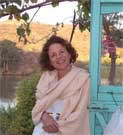By ELIZABETH PISANI
876 words
21 June 1996
<
Asia Times
English
(c) 1996 Chamber World Network International Ltd
Officially, Laos hopes foreign visitors with lots of cash will march in the front line on the country's battle against poverty. Privately, some fear that tourism may prove a Trojan horse, disgorging ill-disciplined visitors who will destroy the culture and nature they have come to enjoy.
Investors in the industry have said strict visa requirements are one sign that the government is putting the brakes on.
"I don't understand why on the one hand the government says it wants to develop tourism and on the other hand it continues to make it so difficult," said hotel-owner Vinay Inthavong.
There appear to be two main reasons for the government's ambiguous attitude. The first is that too many tourist dollars liberally spread may be more than this dwarfish economy can swallow. Government staff are paid very little and in kip.
"If tourism brings dollars and inflation to Laos, the government is going to see even more of its qualified people moving to the private sector," said a businessman.
The second, a reflection of the experience of other countries in the region, is that tourists will bring in their wake a flood of prostitution and other vices that this genteel and isolated land has so far escaped. The communist government sees scruffy Western backpackers as the flag-carriers of this wave of nastiness.
"They definitely want to avoid those people who look dirty, sleep in wats and eat one bowl of soup a day at a street stall," said one travel agent. "Why should we have a whole lot of foreigners who bring nothing to the economy?"
The country would require minimum standards for tourist accommodation to keep prices just high enough to deter penniless travelers, said Sannya Abhay, deputy director-general of the National Tourism Authority of Lao PDR.
Encouraging people to travel with guides from recognized agencies would also help minimize the damage visitors might do if left to wander alone, he said. "Culture is a very fragile thing."
Private travel agencies applauded this approach, particularly in areas where animist ethnic minorities dominate. "If a foreigner stumbles into a village and then later someone in the village falls ill, the people of the village may decide they have to burn some houses or move the village," said Claude Vincent, a long-time resident of Laos who runs the Sodetour agency. "Someone comes here just for their own pleasure but the impact they may have on people's lives can be dramatic."
Vincent said people traveling with guides from local communities might, on the other hand, have a positive impact. "When tourists come and communicate their interest, ask questions about customs and so on, it gives ethnic minorities a certain pride in their culture, and that encourages them to preserve it."
The government is keen to ensure that the population benefits from tourism. "That is the first priority. We don't want the townies always to be making all the money," Sannya said.
His argument was a textbook case for the benefits of "eco-tourism", the buzzword that describes tourism centered on natural beauty. If there is money to be made from tourists visiting pristine natural sites, and a good whack of that money is going to the local people, then it is in their interest to keep those sites pristine.
The approach will be tried out on the beautiful Boloven plateau, in the southern state of Champassak, where hunting and slash-and-burn agriculture are just beginning to take their toll. "Right now, there are probably 15 guns for every five birds up there. We need people to understand that by guiding someone (to see the birds) they can earn US$20 a day. If they shoot the bird, they will be lucky to earn 5,000 kip (US$5.50)," Sannya said.
Laos is a natural for eco-tourism, said Vincent, who puts the concept into practice with a series of lodges in the provinces. Built of domestic materials and in Lao style, they are also entirely Lao-staffed.
Many of the industry executives rued the construction of huge hotels in provincial capitals. And they were not keen to see major resort developments. "We don't need Club Meds," said Sannya.
Arrivals figures show astronomical growth, from 37,600 visitors in 1991 to nearly 10 times that last year and a goal of 500,000 by the end of the decade. But the figures are misleading. They reflect a flood of day-trippers from Thailand whose arrival became much easier in 1994 with the completion of a bridge across the Mekong. Because of this, investors said the boom in hotel rooms was a sad misjudgment. Most Thai visitors spend the night across the river in the Thai border town of Nong Khai, "where they have their brothels and everything else they need", said one travel agent, leaving hotels in Vientiane empty. Vinay estimated occupancy rates in the city at 30 percent to 40 percent.
The key to Laos' success would be to cream off a small number of high-spending visitors from its neighbors Thailand and Vietnam, industry executives said.
Copyright 1996 Asia Times.
(c) 1996 Chamber World Network International Ltd.




